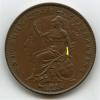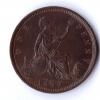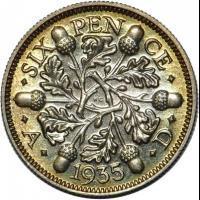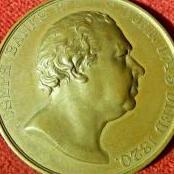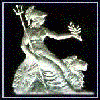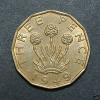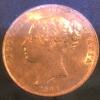At first glance there does not appear to be much of interest, just a small heptagonal coin with what appear to be identical obverses and reverses.
There are however some interesting obverse varieties concerning the shape of the truncation, which follows similar changes on all the other decimal coins, especially during the period 1985 through 1992. There are also some very strange variations to William Gardner’s initials on the reverse.
Obverse 1 1982 – 1984
Obverse 2 1985 – 1992
3rd portrait with a long pointed tip to truncation. When discussing 1992 varieties, this is known as the Small Head.
Obverse 3 1986 – 1993
3rd portrait with a slightly rounded tip to the truncation and reshaped and slightly more curved lower edge. When discussing 1992 varieties, this is known as the Small Head.
Obverse 4 1992- 1997
3rd portrait with a more pronounced rounded end to the truncation and an even more curved lower edge. The whole head has been recut and the hair particularly so. When discussing 1992 varieties, this is known as the Large Head.
Obverse 5 1998 – 2008
4th portrait. I haven’t really looked at these obverses in any detail, so there may be varieties waiting to be found.
Reverse A 1982 – 2008
The only variation to the reverse is the designer’s initials, which change in size and position. They are always the same for each year. Circulation, Brilliant Uncirculated Set and Proof Set are all the same. I keep expecting to find a hidden message similar to the Egyptian, British Protectorate coins. Time will tell! Keep thinking it may be semaphore! Anyway see W.G. Initials below.
Summary and details.
W.G. Initials.
Each pic has my personal unique reference number. i.e. P1991-1, so Proof, year and coin #, or C1992-2, Circulation, 1992 coin #2. B stands for Brilliant Uncirculated.
1982-1987
1988-1989
1990-1992
1993-1997
1998-2001
2001-2008
Other notes
Sometimes when studying Obverses, I’m certain that the B of ELIZABETH is vertical, or the base is to the left of centre, or it leans right etc. I really don’t know. I think I’m expecting to find something like the P of PENCE on the 50p reverse B. On some Reverses the leaves seem to be better cut and have corrugated edges, when on others they seem to have smooth edges.
 Coinpublications.com
Coinpublications.com
